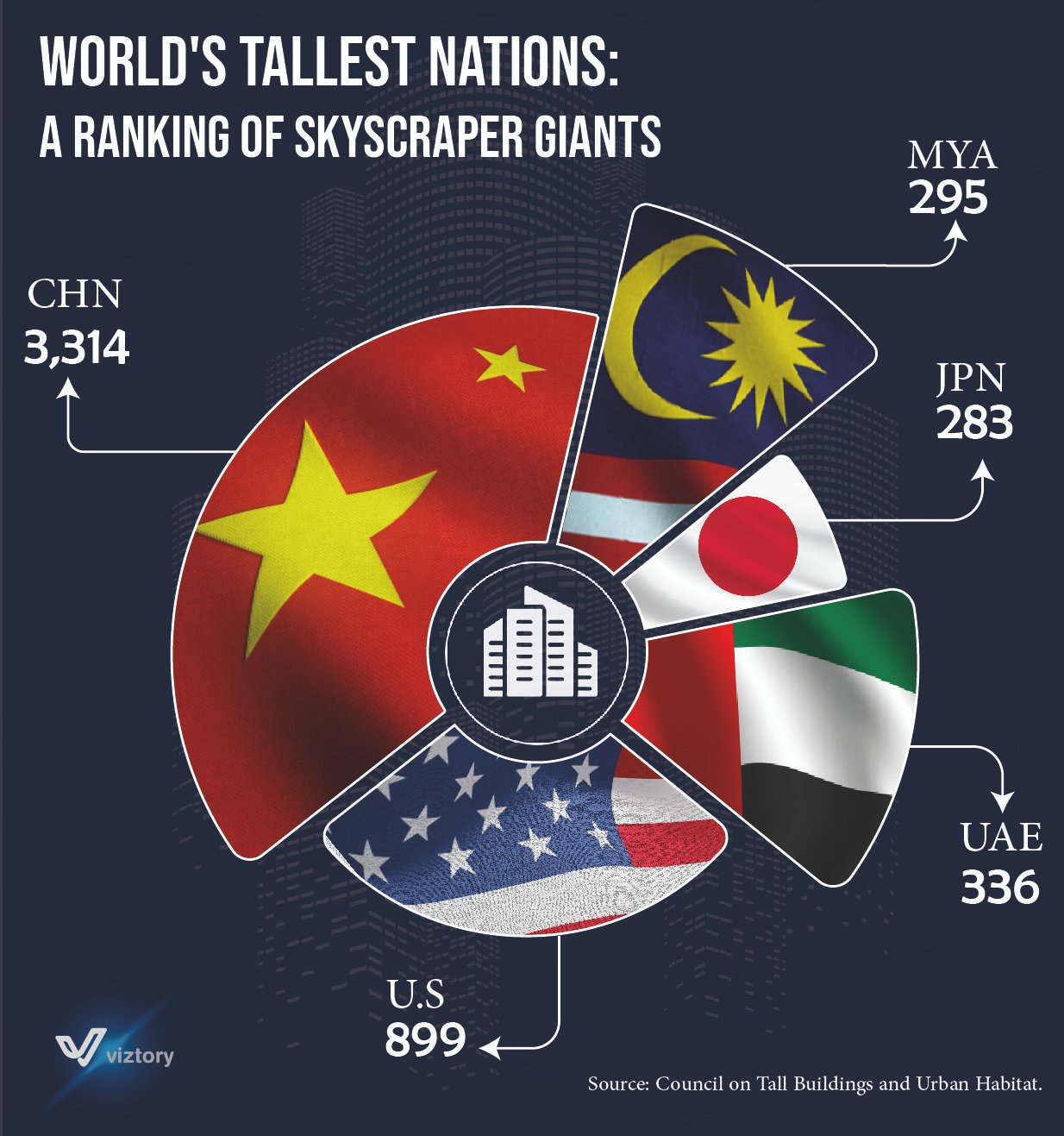Skyscrapers: An Economic Growth Indicator in the World’s Largest Economies
-
Aug, Wed, 2024
Skyscrapers: An Economic Growth Indicator in the World’s Largest Economies
Skyscrapers are a clear symbol of economic growth and rapid urbanization, reflecting the strength of an economy and the extent of urban development. The provided image ranks the countries with the most skyscrapers, serving as a vital indicator of infrastructure investment and population growth in these nations.
China leads the list with an astonishing 3,314 skyscrapers, showcasing the rapid economic growth the country has experienced in recent decades. This massive number reflects China’s ambition to enhance its major cities, like Shanghai and Beijing, into global economic and trade hubs. Such rapid urban expansion underscores China’s economic strength and its desire to achieve global leadership.
The United States follows in second place with 899 skyscrapers, highlighting its historical role as a global economic powerhouse. Cities like New York and Chicago exemplify significant investment in skyscraper construction, reflecting the continued focus on innovation and infrastructure development in America.
The United Arab Emirates ranks third with 336 skyscrapers, a number that mirrors its ambitious vision of transforming into a global trade and tourism center. Dubai, in particular, is home to some of the world’s tallest towers, illustrating the UAE’s commitment to boosting its economic growth and attracting foreign investment.
In close ranks, Malaysia and Japan occupy significant positions on this list with 295 and 283 skyscrapers, respectively. These figures highlight how rapid economic growth in Asia is driving more investments in urban infrastructure, as these nations strive to enhance their regional and global economic status.
In conclusion, skyscrapers in these countries represent not just urban development but also the economic and political ambitions of these nations. These towering structures reflect the challenges cities face in meeting the demands of rapidly growing populations and providing the necessary infrastructure to support this growth, making them a key indicator of each country’s economic health.

